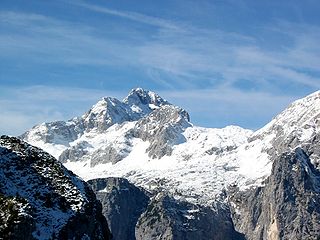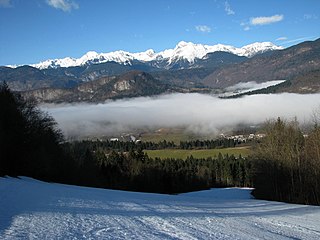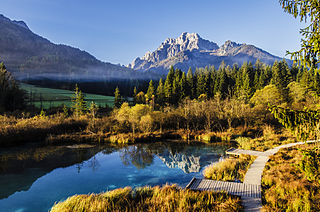
Triglav National Park (TNP) is the only national park in Slovenia. It was established in its modern form in 1981 and is located in the northwestern part of the country, respectively the southeastern part of the Alpine massif. Mount Triglav, the highest peak of the Julian Alps, stands almost in the middle of the national park. From it the valleys spread out radially, supplying water to two large river systems with their sources in the Julian Alps: the Soča and the Sava, flowing to the Adriatic and Black Sea, respectively.

Slovenia offers tourists a wide variety of landscapes: Alpine in the northwest, Mediterranean in the southwest, Pannonian in the northeast, and Dinaric in the southeast. They roughly correspond to the traditional regions of Slovenia, based on the former four Habsburg crown lands. Each offers its own natural, geographic, architectural, and cultural features. Slovenia has mountains, meadows, lakes, caves, and the sea, making it an attractive destination in Europe.

The Sava is a river in Central and Southeast Europe, a right tributary of the Danube. It flows through Slovenia, Croatia and along its border with Bosnia and Herzegovina, and finally through Serbia, feeding into the Danube in its capital, Belgrade. The Sava forms the main northern limit of the Balkan Peninsula, and the southern edge of the Pannonian Plain.

The Triglav Lakes Valley is a rocky hanging valley in the Julian Alps in Slovenia, below the sheer sides of Mount Tičarica and Mount Zelnarica southwest of Triglav. The valley is also called the Seven Lakes Valley, although there are ten and not seven lakes in the valley. It is above the tree line and is geologically alpine karst; therefore it has also been termed the Sea of Stone Valley.

Bohinj, or the Bohinj Valley or Bohinj Basin, is a 20 km long and 5 km wide basin in the Julian Alps, in the Upper Carniola region of northwestern Slovenia. It is traversed by the Sava Bohinjka river. Its main feature is the periglacial Lake Bohinj. Bohinj is part of the Municipality of Bohinj, the seat of which is Bohinjska Bistrica.

The Municipality of Jezersko is a municipality in northern Slovenia. In 1995, Jezersko became part of Preddvor and became an independent municipality in 1998. Originally located in the historic region of Carinthia, it became part of the Upper Carniola Statistical Region in 2005. The seat of the municipality is the town of Zgornje Jezersko.

The Sava Dolinka is a headwater of the Sava River in northwestern Slovenia. The 45 kilometres (28 mi) long Sava Dolinka starts as Nadiža Creek in the Planica Valley under Mount Zadnja Ponca in the Julian Alps, at an elevation of 1222 m, close to the Italian border. The stream goes underground soon after its source and breaks out again after 5 km at an elevation of 842 m in Zelenci, near Kranjska Gora. The Sava Dolinka flows through Kranjska Gora, Gozd Martuljek, Jesenice, between Bled and Breg, and past the town of Lesce. The first in a series of hydroelectric power plants on the river, the Moste Hydro Power Plant, is located near Žirovnica. It merges with the second major headwater of the Sava, the Sava Bohinjka, at Radovljica. Tributaries of the Sava Dolinka include the Triglav Bistrica at Mojstrana and the Radovna, which flows through the Vintgar Gorge near Bled.

Lake Bohinj, covering 318 hectares, is the largest permanent lake in Slovenia. It is located within the Bohinj Valley of the Julian Alps, in the northwestern Upper Carniola region, and part of Triglav National Park.
Bad Eisenkappel, also known as Eisenkappel, is a municipality located in the Vellach Valley in the Karawanken mountain range with the nearby peaks: Obir, Peca, and Olševa. It is the population center of the market township of Eisenkappel-Vellach of the Völkermarkt district in the State of Carinthia, Austria near the border of Slovenia.

The Sava Bohinjka is a headwater of the Sava River in northwestern Slovenia. At 41 kilometres (25 mi) in length, it is the shorter of the two headwaters that become the Sava River in Radovljica, the other being the 45 km (28 mi)-long Sava Dolinka.

Bohinjska Bistrica is the largest settlement and administrative centre of the Municipality of Bohinj, in the Upper Carniola region of northwestern Slovenia.

Zelenci Springs is a nature reserve near the town of Kranjska Gora, in the far northwestern corner of Slovenia. It is the source of the Sava Dolinka River, a tributary of the Danube.

The Radovna Valley is an alpine valley in the Julian Alps in northwestern Slovenia, traditionally part of Upper Carniola. It is included in Triglav National Park in its entirety.

Krma is an alpine valley in the Julian Alps in the Upper Carniola region, northwestern Slovenia. It is included in the Triglav National Park in its entirety.

Kot is an alpine valley in the Julian Alps in the Upper Carniola region, northwestern Slovenia. It is included in Triglav National Park in its entirety.

Zgornja Radovna is a dispersed settlement in the Municipality of Kranjska Gora, northwestern Slovenia, belonging to the traditional region of Upper Carniola. The village lies at the juncture of the Kot Valley and the northern part of the Krma Valley. The Radovna River, a tributary of the Sava Dolinka, emerges under the Jutrova Skala Slope in the northeastern part of the settlement.

The Municipality of Kranjska Gora is a municipality on the Sava Dolinka River in the Upper Carniola region of northwest Slovenia, close to the Austrian and Italian borders. The seat of the municipality is the town of Kranjska Gora.

The Municipality of Mirna Peč is a municipality in southeast Slovenia, located in the traditional region of Lower Carniola. The seat of the municipality, which was established in 1998, is Mirna Peč. With an estimated population of 2,800, the municipality is included in the Southeast Slovenia Statistical Region.


















